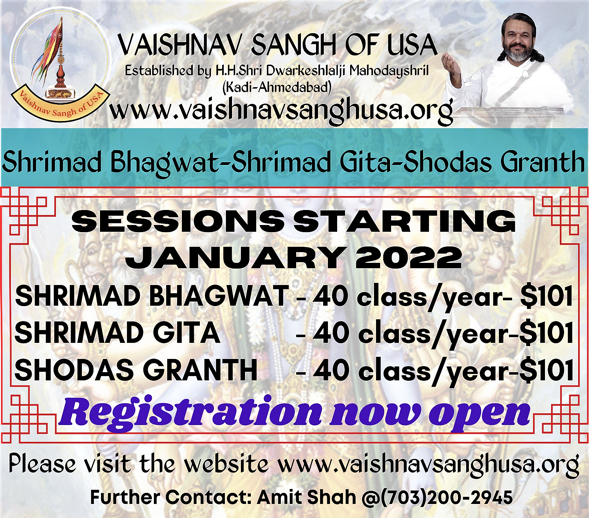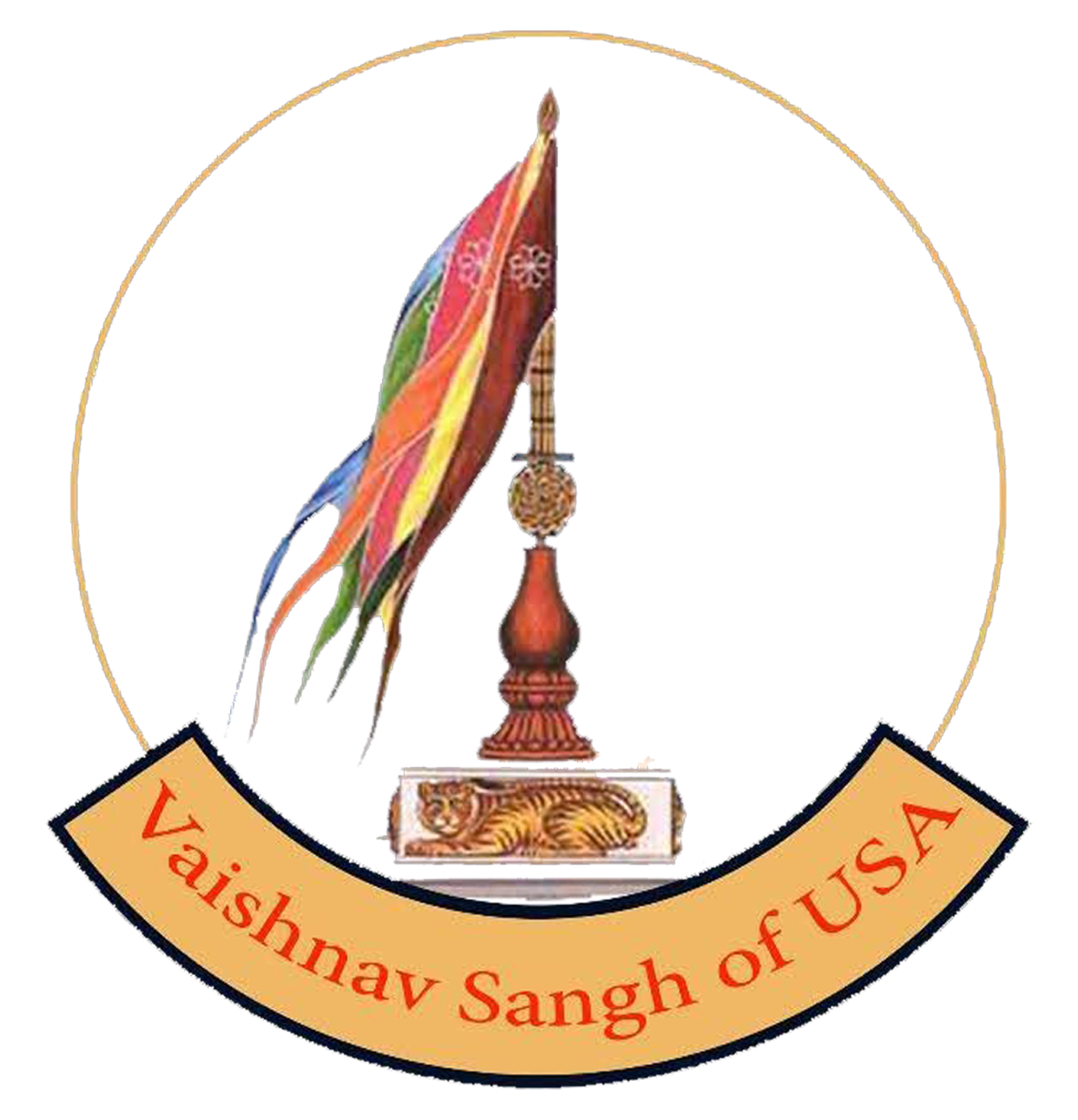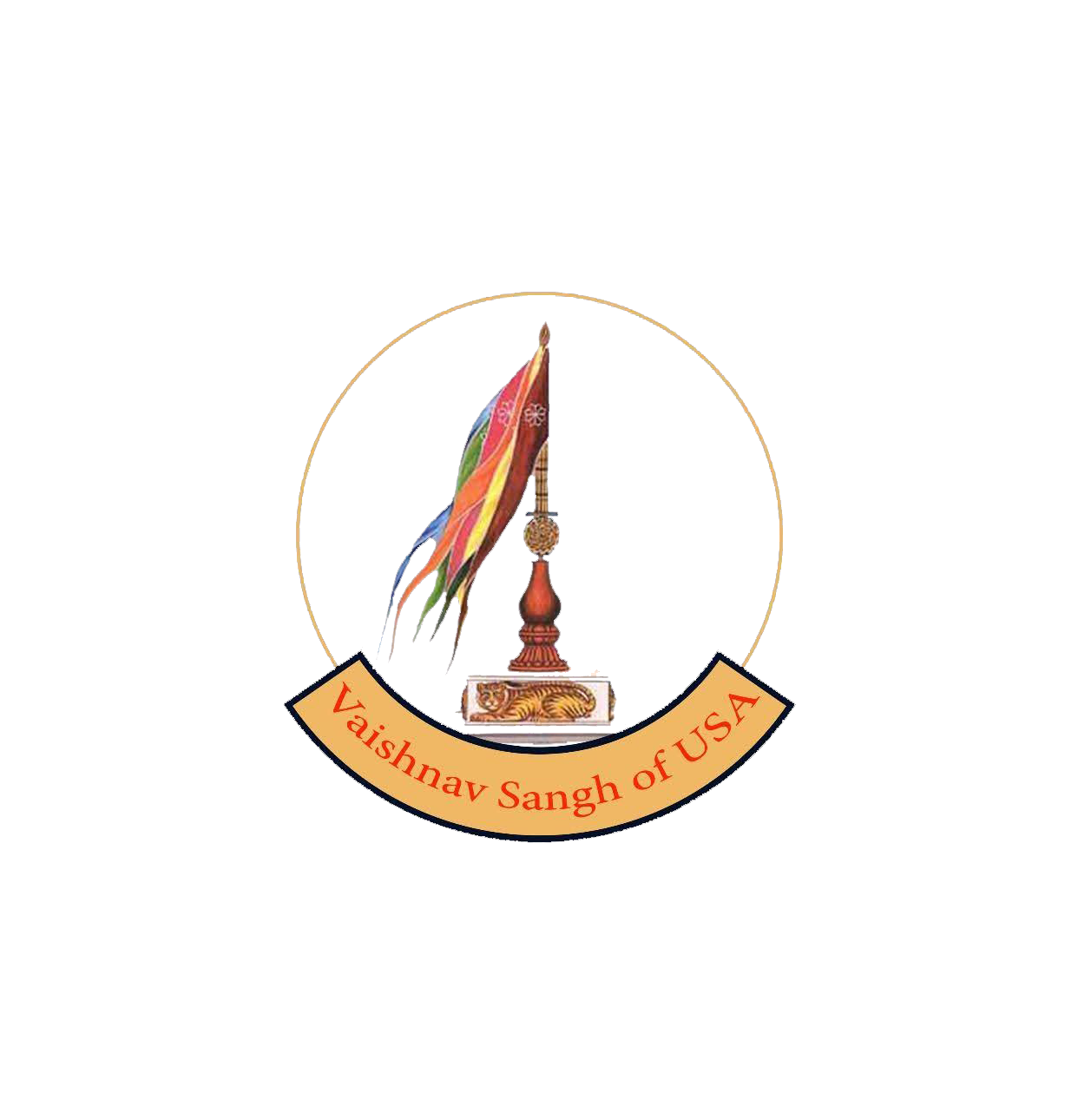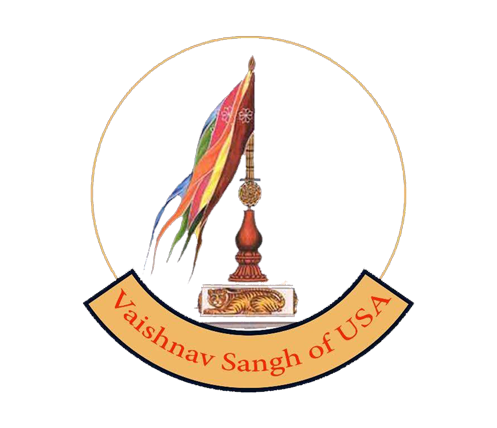
JJ Shri Message
સર્વે વૈષ્ણવ ને ભગવદ સ્મરણઅને દિવાળીની શુભકામના
વૈષ્ણવી જીવના ભેદ
શ્રીમહાપ્રભુજી સમજાવે છે કે પુષ્ટિ-વૈષ્ણવી-જીવ ચાર પ્રકારના છે. શ્રીમહાપ્રભુજી એ બતાવેલા વૈષ્ણવી જીવ ના ભેદ, આ ચાર પ્રકારમાંથી આપણે કયા પ્રકારમાં આવીયે, તેની આત્મખોજ જરૂર કરી લેવી.
૧. શુદ્ધ પુષ્ટિ જીવ: તેઓ શ્રી ઠાકોરજી સાથે નિષ્કામ, શુદ્ધ પ્રેમથી જોડાયેલા રહે છે. અહર્નિશ શ્રીઠાકોરજીને હૃદયમાં રાખી, શ્રીઠાકોરજીમાં જ તત્પર રહેનારા, શ્રીઠાકોરજીના જ વ્યસની હોય છે.
૨.પુષ્ટિ પુષ્ટિ જીવ: નિર્ગુણા ભક્તિ કરનારા , સેવા-સ્મરણ માં તત્પર હોય છે. શ્રીઠાકોરજીમાં તેમની આસકિત હોય છે.
૩.પુષ્ટિ મર્યાદા જીવ: સેવાને બદલે સત્સંગ-સ્મરણ માં તેમની અધિક રુચિ હોય છે. જપ,તપ,વ્રત, દાન, યાત્રા વગેરે વધુ કરે છે.
૪.પુષ્ટિ પ્રવાહી જીવ: સેવા-સ્મરણ કરે, પણ ક્રિયાવત કરવા ખાતર, તેમાં પ્રેમ ઓછો, ચિત્તની એકાગ્રતા નહિ.
ANNAKUT UTSAV
On the first day of Gujarati New Year, which is Kartik Sud Ekam – Annakut Utsav is celebrated in which Annakut is offered to Thakorji. To increase the importance of Girirajji, Thakorji stopped Nand Bawa, Yashodaji and people of Vraj, from performing the Indra-yaag and instead, offered prayers to Shri Girirajji and Thakorji HIMSELF assumed the form of Shri Girirajji and consumed all the offerings (in the form of their Bhav) made by Vraj Bhakts; and thus, turning this event in a joyous Utsav. Each and every offering which the Vraj-Jan made was consumed by Thakorji who assumed the form, having thousand hands. Indra felt angered and humiliated. In order to take revenge on these people, he poured non-stop rains on Vraj. To protect the people of Vraj from this wrath of Indra, Thakorji with HIS little finger lifted the Govardhan (Girirajji) and stood for seven days. Thakorji protected the Vraj mandal and thereby cutting down Indra to size (Indra Maan-Bhang Leela) and thus, called Govind. The other reason for PRABHU to enact this Leela was to teach the Vraj-Jan to first make an offering of all the new farm products to Thakorji and then take them for their own use. This is how the Annakut was started by Thakorji HIMSELF. This custom prevailed for so many years and later on Shri Vallabh incorporated this Annakut Utsav in Pushti Marg and later, Shri Gusaiji further expanded the form of this Utsav in Pushti Marg and was the first person to show the way to the people as to how to perform this Annakut. In Pushti Marg, this Leela of Thakorji holding the Govardhan on HIS little finger for seven days and nights has many Pushti Bhav-Bhavana, mainly to stay away from Anya-ashray and keep “AnanyaAashray” in Govardhan / Girirajji. In our entire life, we go through the cycles of seven days that is, cycles of a week. There is no eighth day of the week. This way, Thakorji indicates that all the good and bad in the life of the Jeev done during the cycle of these seven days in entire lifetime; is forgiven when Jeev surrenders self in totality to the Thakorji. The Bhakt Jeev must totally give up the need to seek Aashray to any other Devi-Devta and must seek solace only in the Charan Kamal of Thakorji, who is the only one who has ability for the upliftment of HIS Bhakt Jeevs. Annakut Samagri Thakorji consumes in form of HIS Bhakts’ Bhav. In Annakut, various samagri as per Bhakt’s capacity are offered. This includes Leelo Mevo (Fruits) + Dudh-Ghar + Ana-Sakhadi + Sakhadi. Boundaries made by turmeric powder are drawn to segregate the different types of Bhog to be offered. The typical order to set Annakut Samagri is as follows: 1. On Thakorji’s Left (Vaam) side = Leelo Mevo, Chutney, a bowl of salt, a bowl of black pepper, slices of lime, thin slices of Ginger root, etc 2. On Thakorji’s Right (Dakshin) side = Makhan – Misri + Malai + Shrikhand + Rabdi + Badam – Pista – Eliachi – Kesar Dudh + Dahi + Basundi, etc 3. On Both sides in front = a. Dudh-Ghar Samagri such as (as per individual Bhakt’s capabilities) = Gulab Jamun, Aaloo ni Jalebi, Penda, Kaju – Anjir roll, varieties of Barfi, different type of Halwa (Badam, Dudhi etc.), Meva-bati, Kopra-paak, Bilsaaru, Mysoor-paak (kaju, badam), Gulab katli, Sugary Dry fruits (Khaand paayela Suka meva), Roasted Nuts (Bhunjela Suka meva), etc. b. Ana-Sakhadi, which has to be placed in front of Thakorji, such as = Chootti Boondi, Boondi na Laddoo, Sakkar-paara, Thor, Gunja, Sevaiyya, Manohar, Udad na laddoo, Tava Poori, Farsi Poori, Makhan Vada, Chandrakala, Jalebi, Ghevar, Baabar, Sutar-feni, Mohan-thaar, Mathadi, Magaj na Laddoo, Chakri, Sev, Gaanthiya, Fulvadi, fried Chanaa (red), Moong, Farfariya, Khaaja, Chola fali, etc. In addition, all types of Kheer, Raita, Sheeraa, etc. c. Thakorji sanmukh, exactly in center = A Kut or Kot (i.e., like a small mountain type structure) of Rice. For this, A bundle of hay (dried grass) is tied in the form of a tyre (circle) and placed on a big plate, on which a cloth is covered. Then on it, Ashtadal of turmeric is made and a bowl of Paatiya ni sev is kept and again covered with a new cloth and then, cooked Rice is poured to make it like a “Kut.” The “Kut” of rice is then adorned from all the sides with Tulsi mala and sprinkled with Kesar. Once this “Kut” is prepared then place 4 “Gunja” on each side of this “Kut”; with a Bhav of 4 Hast-Kamal of Thakorji. These “Gunja” must be half buried in Rice with a bhav of 4 Ayudh of Thakorji. d. Surrounding all 4 sides of this “Kut” = First place all types of Utsav’s Rice such as Dahi Bhaat, Limbu Bhaat, Sikhran Bhaat, Meetho Bhaat / Biranj + whole Moong ni Daal, Toor Daal, Kadhi, etc. Behind this, each type of “Kathol,” varieties of Vegetables, and both sides covered with yellow and white Dhokla, Paatra, Muthiya, Vada, Kachori, Bhajiya, Papad, Samosa, Poori, Bajra ni Roti with Butter and Gud on top of it, etc. e. While towards Thakorji’s side (inside) of the “Kut” = Place a bowl of Ghee and place spoon in everything. f. Place Jhariji filled with “Jal” must be placed near Thakorji. g. Finally place Tulsiji gradually in each samagri starting first with Dudh-Ghar, followed by Ana-Sakhadi and finally, in Sakhadi samagri. The bhav of Annakut is of Yagna Bhagwan. The center “Kut” of Rice is of the Bhav of Heart of Thakorji, The Circular Chakra (which is placed on top of the Kut) is the Shri Mastak while the Four Gunja on four sides are with the Bhav of Four Shri Hast-Kamal of Thakorji. In any yagya, these below three things must be done: A = Yagya Sahitya – For this; Payas, all types of Kheer, Ghee, Handi, Til, Udad Dal etc are used in Annakut B = Tarpan – Prasadi Dudhghar which is taken by Goswami Balak; is Tarpan C = Marjan – Maha-Prasad distribution is the Marjan (For example; Bheels are offered this Maha-Prasad at Nathdwara) There are major differences between Thakorji’s Annakut and 56 Bhog. In Annakut, there is a limit in which the samagris offered. A specific amount is only offered in Annakut. While in Annakut, Sakhadi Samagri is more than Ana-Sakhadi but in 56 Bhog, Ana-Sakhadi Samagri is more than Sakhadi Samagri. Annakut is the bhog offered by Shree Nandaraiji while 56 Bhog is offered by “Sakhis” in Nikunj. Annakut can only be done upto certain days from Kartak sud 1 while 56 Bhog can be done on any Shubh day.

શ્રીજીની સામગ્રી
BADAM SEERA
Ingredients:
1 cup Badam powder, ½ cup Sugar 2 tablespoonful Ghee, ½ cup Milk ½ tsp Elechi Powder
Method of Preparation:
Heat ghee in a thick base kadhai.
Add badam powder Stir on low flame.
Add milk, continue stirring till milk is absorbed.
Add sugar and eliche powder.
Continue stirring till ghee comes to the surface.
Set in a bowl and decorate with few dry fruits or khas-khas
NEW INSTRUMENT LEARNING CLASSES
With the blessings of Founder and Inspirer of Vaishnav Sangh of USA and Vaishnav Sangh Academy Vaishnavacharya Shri Dwarkeshlalji Mahodayshri, we are extremely excited to announce kirtan musical instrument like Tabla, Pakhawaj and Flute certified courses starting January 2022, by Shri Jay Vohra, famous percussion instrument player accompanies pujya JJ Shri during his vachnamrut in India. Classes will be held once a week and the fee is $5 per class. Registration will open from September 10th, 2021. Class size will be limited, so please register as soon as possible.
This is an ongoing effort by Pujya JJ Shri to help Vaishnav learn all the different elements of Pushtimarg and by introducing the instrument along with Kirtan classes, really help Vaishnav to be more involved in his/her seva and offer more love to thakorji.
NATIONAL SATSANG
With the blessings of Vaishnavacharaya Dwarkeshlalji Mahodayshri, Vaishnav Sangh of USA is happy to announce virtual monthly National Satsang on every Agyrias/Ekadashi at 9:00 pm EST, and our team is working hard for the Satsang planning. We invite all Vaishnav to join and participate in the Satsang. Satsang will be in the format of encompassing all the Pushtimargiya related topics, such as Agyrias Darshan, Granth Darshan, Utsav or Tirth Darshan and Varta Darshan, including kirtan and dholpad. We will invite Vaishnav from each state to take a lead in any of the topics they choose and contact the lead member. We are fortunate for JJ Shri vision and suggestions to make the National Satsang a success for now and for the future. So, this is the time for all Vaishnav to come together and join hands and pass on the message to other Vaishnav and participate in Satsang. Our next National Satsang will be held on August 4th, at 9 pm EST and everyone should join.



